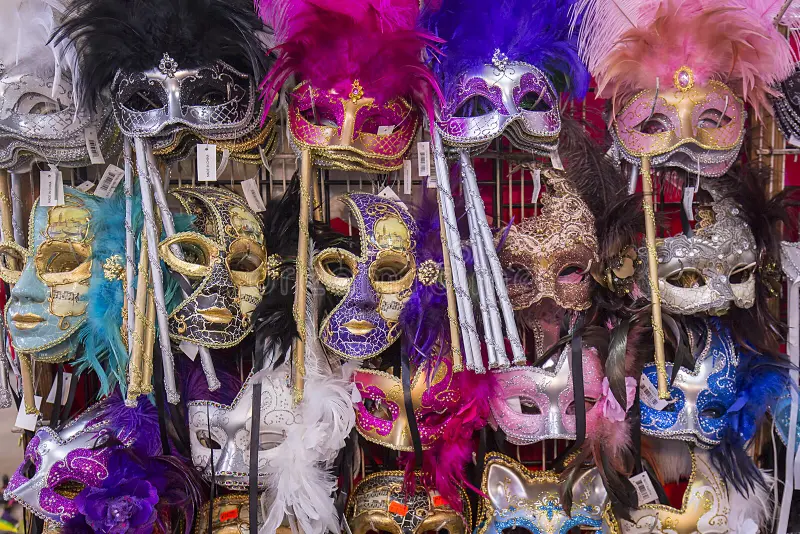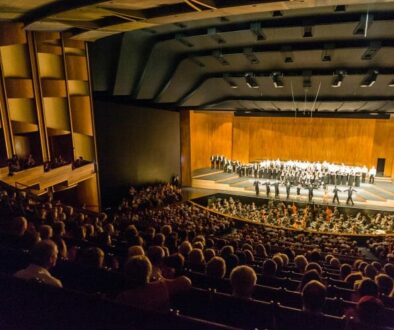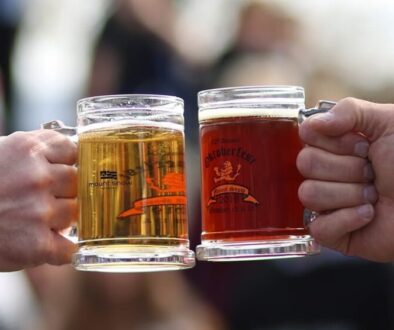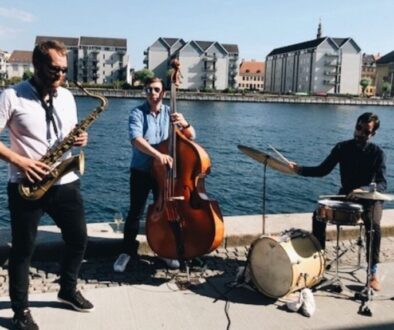Mardi Gras Madness in New Orleans: Let the Good Times Roll
Mardi Gras, the famous festival of colors, music, and revelry, holds a special place in the hearts of New Orleanians. The city comes alive with unmatched energy and exuberance during this annual celebration. In this article, we will explore the rich history, vibrant parades, and the role of krewes that make Mardi Gras in New Orleans an unrivaled experience.
History of Mardi Gras
Mardi Gras has a long and fascinating history that can be traced back to European traditions. It began as a Christian observance that marked the start of the Lenten season. When French explorers settled in present-day Louisiana, they brought Mardi Gras customs with them. Over time, Mardi Gras evolved into a grand celebration unique to the city of New Orleans.
In the early days, Mardi Gras celebrations in New Orleans were informal and sometimes rowdy. It wasn’t until the mid-19th century that organized parades and masked balls became an integral part of the festivities. The Mistick Krewe of Comus, founded in 1856, was the first of many krewes established to coordinate and finance Mardi Gras events. These krewes sought to bring a sense of order and pageantry to the celebrations, ensuring that Mardi Gras became the spectacular event it is today.
The Colorful Parades
At the heart of Mardi Gras in New Orleans are the elaborate parades that wind their way through the city streets. These parades showcase the artistic prowess of the krewes and captivate spectators with their stunning floats, dazzling costumes, and unforgettable throws.
The floats, often towering works of art, are meticulously crafted and adorned with intricate designs and vibrant colors. Each float is a visual spectacle, showcasing a specific theme chosen by the krewe. From mythical creatures to historical events, the themes span a wide range of subjects and provide a visual feast for parade-goers.
The participants in the parades, both on foot and on the floats, are dressed in elaborate and imaginative costumes. These costumes reflect the theme of the parade and contribute to the overall atmosphere of fantasy and celebration. From whimsical characters to extravagant ball gowns, the costumes add a sense of wonder and magic to the Mardi Gras experience.

One of the most sought-after treasures during the parades is the throws. The throws can take various forms, including beads, cups, coconuts, doubloons, and stuffed animals. Traditionally, the throws are tossed from the floats to the cheering crowd, and catching them has become a cherished tradition for both locals and visitors alike.
The Role of Krewes
Krewes play a vital role in organizing and executing the Mardi Gras parades. These private organizations, composed of members who contribute financially and actively participate in the festivities, are responsible for planning every aspect of their respective parades.
Each krewe has its own unique identity and contributions to Mardi Gras. Some of the well-known krewes include Krewe of Rex, Krewe of Zulu, and Krewe of Endymion. Krewe of Rex, established in 1872, is known for its beautiful and majestic floats, as well as the selection of Rex, the King of Carnival. Krewe of Zulu, founded in 1909, holds a prominent place in Mardi Gras history as an African-American krewe and is famous for its coconuts, one of the most coveted throws. Krewe of Endymion, founded in 1967, is known for its extravagant and spectacular floats, as well as its star-studded parade and post-parade extravaganza.
These krewes devote countless hours and resources to create unforgettable Mardi Gras experiences for both participants and spectators. They embody the spirit of Mardi Gras and contribute to the rich tapestry of traditions that make New Orleans’ celebration unique. Without the dedication and creativity of the Krewes, Mardi Gras in New Orleans would not be the same.
The Traditional King Cake
No Mardi Gras celebration is complete without indulging in a delicious King Cake. This iconic pastry, often enjoyed during the carnival season, holds great significance in New Orleans’ Mardi Gras traditions. The circular shape of the cake represents the unity of the community, while the decorative colors of purple, green, and gold symbolize justice, faith, and power, respectively.
What makes the King Cake truly unique is the inclusion of a hidden trinket or baby inside. This tiny figure, originally representing baby Jesus, now carries various meanings. Finding the trinket or baby in your slice of King Cake is considered good luck and also comes with the responsibility of hosting the next round of festivities. This charming tradition adds an element of surprise and excitement to the Mardi Gras celebrations.
Music and Entertainment
Mardi Gras in New Orleans is synonymous with lively music and infectious beats. The city’s rich musical heritage, particularly in jazz and brass bands, takes center stage during the festivities. From traditional jazz to modern interpretations, the streets of New Orleans come alive with the sounds of trumpets, saxophones, trombones, and drums.
Various bands and performers showcase their talent, bringing energetic rhythms and soulful melodies to the Mardi Gras experience. The joyous tunes create an irresistible urge to dance and celebrate. Whether it’s a vibrant marching band leading a parade or a local jazz ensemble performing in one of the city’s lively venues, the music during Mardi Gras in New Orleans is a highlight of the festivities.

Street Parties and Celebrations
Street parties and celebrations are an integral part of Mardi Gras, particularly in New Orleans, Louisiana. These vibrant and lively events bring people from all walks of life together to revel in the festive atmosphere.
One of the most famous street parties during Mardi Gras is the French Quarter Fest, which takes place in the historic French Quarter neighborhood of New Orleans. This four-day event features live music, food vendors, and a lively atmosphere where partygoers can dance and celebrate in the streets.
Another popular neighborhood for street parties is the Garden District. Known for its beautiful architecture and charming streets, this area comes alive during Mardi Gras with block parties and parades. It offers a more relaxed and family-friendly atmosphere, with locals and visitors enjoying music, food, and games.
The Marigny is another neighborhood famous for its street parties during Mardi Gras. This bohemian district hosts the Krewe du Vieux parade, known for its satirical and humorous floats. The streets of the Marigny are filled with people dressed in colorful costumes, dancing, and celebrating.
Mardi Gras Costumes and Masks
Mardi Gras is known for its colorful and extravagant costumes, which play a significant role in the celebrations. These costumes often feature vibrant colors, feathers, sequins, and elaborate designs. They allow people to express their creativity and participate fully in the festive atmosphere.
Costumes worn during Mardi Gras can vary greatly, ranging from traditional carnival outfits such as jesters and harlequins to more contemporary and playful costumes. Many participants choose to dress up as characters from folklore, or historical figures, or simply in outfits that reflect their own personal style.
Masks also hold great importance in Mardi Gras traditions. Wearing masks dates back to ancient pagan rituals and helps create a sense of mystery and anonymity during the festivities. One of the most recognizable types of masks is the Venetian-style masquerade mask, which is elegantly crafted with feathers, beads, and intricate designs. Masks allow revelers to let loose and embrace the spirit of Mardi Gras without inhibitions.

New Orleans Cuisine during Mardi Gras
Mardi Gras is also known for its delicious and indulgent cuisine. New Orleans, in particular, offers a mouthwatering array of dishes and treats during Mardi Gras.
Classic dishes like gumbo, a flavorful stew made with a variety of ingredients such as sausage, shrimp, and okra, are popular choices. Jambalaya, a rice dish filled with bold flavors from ingredients like sausage, chicken, and spices, is also commonly enjoyed.
No Mardi Gras celebration would be complete without indulging in beignets. These deep-fried pastries covered in powdered sugar are a beloved treat in New Orleans. They are often enjoyed with a cup of café au lait, which is a combination of strong coffee and hot milk.
Many vendors and food stalls can be found throughout the Mardi Gras festivities, offering a wide range of delicious and traditional dishes to satisfy any craving. From savory dishes like gumbo and jambalaya to sweet treats like beignets, Mardi Gras cuisine is a vital part of the overall experience and adds to the joyful and indulgent spirit of the celebrations.
Mardi Gras and Tourism
Mardi Gras has a significant impact on New Orleans’ tourism industry, attracting millions of visitors each year. The festival brings in a substantial amount of revenue through hotel bookings, restaurant sales, and tourism-related activities. According to the New Orleans Convention and Visitors Bureau, Mardi Gras generates over $1 billion in economic impact for the city.
The influx of tourists during Mardi Gras creates job opportunities and boosts various sectors of the economy, including hospitality, transportation, and retail. Many businesses rely on the festival for a significant portion of their annual revenue, leading to growth and development within the city.
Mardi Gras Celebrations around the World
Mardi Gras celebrations are not limited to New Orleans – they can be found in various parts of the world, each with its own unique customs and traditions. For example, Brazil’s Carnival is one of the most famous and extravagant Mardi Gras festivities. It features Samba parades, vibrant costumes, and massive street parties. Other countries like Italy, Germany, and the Caribbean also have their own versions of Mardi Gras with distinct cultural elements.
Despite the differences in traditions and cultural practices, Mardi Gras celebrations worldwide share common themes of revelry, music, dance, and extravagant costumes. While New Orleans is often seen as the epicenter of Mardi Gras, exploring these global festivities allows for a broader understanding and appreciation of the diversity of this vibrant holiday.
Mardi Gras Safety Measures
Safety measures during Mardi Gras are of paramount importance due to the large crowds gathering for the celebrations. Local authorities and event organizers work together to implement various safety measures to ensure a secure experience for participants and spectators.
Crowd management is a vital aspect of ensuring safety during Mardi Gras. Barriers, roped-off areas, and organized parade routes help control the flow of people and prevent overcrowding. Law enforcement agencies also play a crucial role in maintaining order and responding to any emergencies.
Medical teams and first aid stations are strategically placed throughout the festival areas to provide immediate assistance if needed. Additionally, public awareness campaigns promote responsible behavior and encourage participants to take precautions like staying hydrated, using designated restrooms, and respecting the rules and regulations.
By prioritizing safety and implementing these measures, Mardi Gras organizers aim to create an enjoyable and secure experience for all attendees while minimizing any potential risks associated with large-scale events.
The Spirit of Mardi Gras
The spirit of Mardi Gras is rooted in joy, celebration, and unity. It brings people from diverse backgrounds together, fostering a sense of community and camaraderie. This festive occasion allows individuals to let loose, express themselves, and temporarily escape the burdens of everyday life.
One of the remarkable aspects of Mardi Gras is its inclusive nature. People of all ages, ethnicities, and social backgrounds come together to celebrate. It is a time when differences are put aside, and a spirit of acceptance and tolerance prevails. Whether you are a local resident or a visitor, Mardi Gras welcomes everyone to immerse themselves in the festivities and experience the true essence of the celebration.
Mardi Gras Beyond New Orleans
While New Orleans is widely known for its extravagant Mardi Gras celebrations, several other cities in the United States also embrace this holiday. These cities put their own unique twist on the festivities while still embodying the spirit of Mardi Gras.
Mobile, Alabama, often referred to as the “birthplace of Mardi Gras in America,” holds its own vibrant celebrations. The city boasts colorful parades, elaborate floats, and traditional masked balls. Mobile’s Mardi Gras traditions date back to the early 18th century, making it one of the oldest Mardi Gras celebrations in the country.
Galveston, Texas, also boasts a rich Mardi Gras tradition. The city’s festivities include parades, live music, and elaborate costume balls. Galveston’s Mardi Gras celebration is known for its family-friendly atmosphere, attracting visitors of all ages.
Pensacola, Florida, hosts a lively Mardi Gras celebration as well. It features parades, live entertainment, and various events leading up to Fat Tuesday. The city’s Mardi Gras traditions have been celebrated for over a century, bringing together both locals and tourists in a joyous atmosphere.
These cities, amongst many others, showcase the widespread appeal and enduring spirit of Mardi Gras across the United States. While each location may have its own unique traditions and festivities, the underlying themes of fun, togetherness, and celebration remain consistent, providing opportunities to embrace the spirit of Mardi Gras beyond New Orleans.
Conclusion
Mardi Gras in New Orleans is a celebration like no other, filled with colorful parades, lively music, delicious cuisine, and a sense of community. It showcases the city’s rich cultural heritage and brings people together in an inclusive and joyous atmosphere. Whether you are a local or a visitor, experiencing Mardi Gras in New Orleans is a must for anyone looking to let the good times roll.
FAQs
Is Mardi Gras a family-friendly event?
Mardi Gras in New Orleans offers family-friendly celebrations in various neighborhoods, providing a safe and enjoyable environment for all ages.
Can visitors participate in the parades?
While participation in the parades is restricted to Krewe members, visitors can enjoy watching the parades from designated areas along the parade routes.
How early should I arrive to secure a good spot for watching the parades?
It is recommended to arrive a few hours before the scheduled parade time to secure a good viewing spot, especially in highly popular areas.
Are costumes required to attend Mardi Gras?
While costumes are not required, many attendees embrace the spirit of the festival by wearing colorful attire and masks.
Can I try the traditional King Cake outside of Mardi Gras season?
Some bakeries in New Orleans offer King Cakes year-round, allowing you to enjoy this delicious treat outside of the Mardi Gras season.
Also Read:



